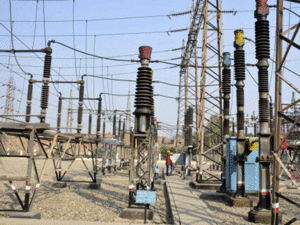Our correspondent interviewed some of the exhibitors at the just concluded The Big 5 Construct Nigeria that took place in Lagos. We present the interview with one of the global exhibitors, Mr. Robin De Beer, Technical Sales Head (INT’L) of JAYCEE Company. Jaycee Company from India manufactures and supplies Fly Ash, which is a product that replaces cement and concrete.
Please clarify on the efficiency; cost and time, of using Fly Ash?
Well, it takes the same time as OPC or Ordinary Portland Cement to set, but strength gained at 7 days is a bit slower in comparison to ordinary cement. At 28 days however, the case is different as the strength would be fully gained in comparison to OPC. In addition to that, it is a bit slower at 7 days because that is when the reaction takes place. This happens because there is a reliance on free lime that comes from cement and water to react with the Fly Ash. So, three days of the same strength, seven days is maybe 3, 4, 5% beyond, and 28 days is very similar in strength.
What are the characteristics of classified Fly Ash?
The best place to do this is to go BSEN 450S specification, which is the new British Standard with the European Standard mix, and that is the best specification because it gives the best quality Fly Ash. Any other specification allows the Fly Ash to be much coarser but not the BS.
What are some of the projects Fly Ash has been used in, in African countries, especially?
The biggest we have done till date is in Kenya – the railway line from Mombasa to Nairobi and that is being about 240, 000 tons we supplied there. We have also done many dams and bridges there but on a smaller scale. There is one in Nigeria – for the metro.
Why have there not been a lot of projects done with Fly Ash in the building and construction industry here in Nigeria, what are the limitations?
I think the limitations are the fact that there is no Fly Ash here, so it has to be imported. Also, we have not really been here before although we have been to many other places around the world that are using it, but it is the first one for Nigeria, using it in one of the metro-projects.
What needs to be done; structures and all, for Fly Ash to gain more presence in the industry?
Fly Ash can come into Nigeria straightaway, all we need is to put up an infrastructure or have somebody to hold stock here through which we can sell to all the contractors and consultants.
How do you intend to reach this category of people you have mentioned?
Well, that is why we need to get elected partners, who would get around seeing them while we back them up with technical ability. After this we can then bring in the Fly Ash and sell to different people, like the cement companies or contractors. It all depends on who we get as an agent.
Do you think the Nigerian market is ready to incorporate Fly Ash into the industry?
I think it is really ripe and the right time because it has the potential but all that is required is somebody to bring it in and start pushing it while showing people how it works. We need to do some mixed designs here and show people how it works and then it will take off.
Having highlighted the things that need to be put in place for Fly Ash to become relevant in the industry, what do you want our readers to take-away?
People in Nigeria should use a lot more Fly Ash because their buildings are going to stand for much longer. There are many benefits which have been proven already by lots of studies, that you can get at least twice the longevity of normal concrete from Fly Ash – minimum, and that is the biggest benefits. By using Fly Ash, structures can stand for a 100 years.
What are some disadvantages of using Fly Ash?
The biggest disadvantages, I would say, for some people, is the price but I do not really consider it a disadvantage. We are well priced – Fly Ash comes in cheaper than cement, as cement is really high according to world standards and there are very few disadvantages when you look at it compared with the advantages. Also, maybe the lag in strength at 7 days for Fly Ash in comparison to cement, but it is nothing to worry about. We build high-rise structures, one on top the other after 14 days, we have no problem.
What kind of structures can Fly Ash be used for?
Any structures, anywhere you are using concrete, you can use Fly Ash concrete and it is always going to be; I believe, better because it has got a lot better particles and mix-up in the mixture, so one will always get a better mix, no doubt about it.
Do you see a future where concrete or OPC are done away with, and a focus on solely Fly Ash?
Fly Ash will never be on its own, unless you can get a catalyst to start it, and that is already being done with what is called ‘geopolymers’ today. Utilizing Fly Ash and maybe Ground-Granulated Blast-furnace Slag (GGBS) with a special catalyst that uses no cement and there are small pavements and walk-ways been already being done with this. So, yes, there is a time where we would not use anymore OPC, I believe, and it is being used and tested around the world in many places.










